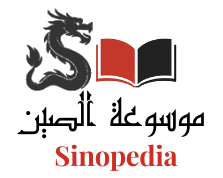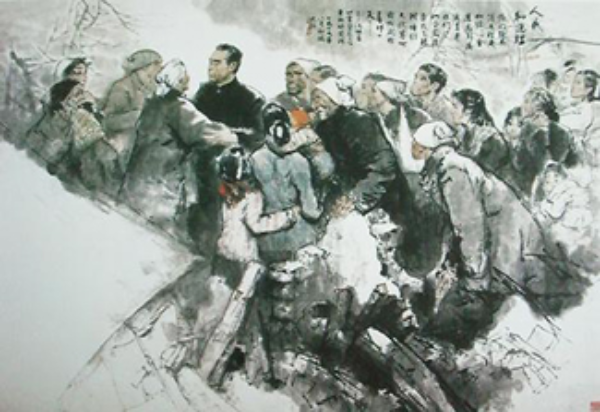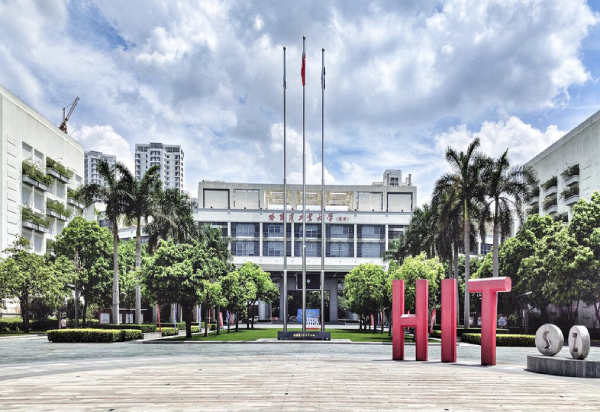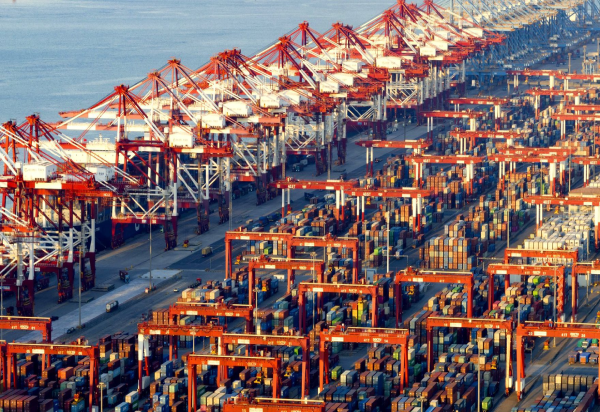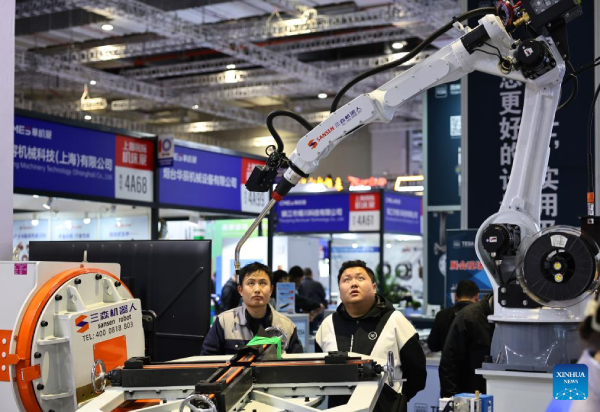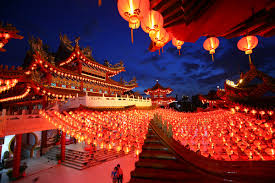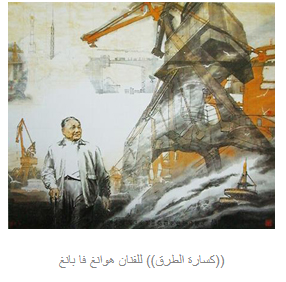
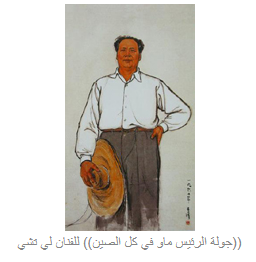
Revolutionary Leaders in Iconic Paintings
Amid the struggle to establish the People’s Republic of China in 1949, numerous revolutionary leaders appeared in the works of painters. These portraits left a lasting influence on generations of Chinese citizens.
Mao Zedong: The Icon of Chinese Revolutionary Art
Jin Shangyi’s 1966 Portrait
A painting of Chairman Mao Zedong by Jin Shangyi (1934– ) sold for 20.16 million yuan at a spring auction — the highest price ever paid for a portrait of a Chinese leader. Created in 1966 and measuring 262 × 137 cm, the piece is considered Jin’s masterpiece and the largest full-body painted portrait of Mao in history.
“Chairman Mao Goes to Anyuan”
Painted in 1967 by Liu Chunhua, this piece is considered one of the most widely reproduced paintings in the world — with over 900 million printed copies, surpassing even Leonardo da Vinci’s Mona Lisa in distribution.
The painting depicts a young Mao during the 1921 workers’ movement, walking up a mountain road on his way to Anyuan to promote his revolutionary ideals among coal miners.
Mao himself commented:
“The character in the painting resembles me. But I didn’t wear such fine cloth shoes — I had straw shoes. And I wore a short coat, not a long robe.”
Despite this, Mao praised the spirit of the painting. It was included in primary school textbooks and replicated in medals and plaster sculptures across China, becoming a cultural symbol of the era.
Leaders in Everyday Life: Humanizing the Revolutionaries
Li Qi: “The First Painter of Revolutionary Leaders”
Li Qi (1928– ) created a series of beloved paintings depicting prominent Chinese leaders:
-
“Forever in the People’s Hearts” – portraying Zhou Enlai
-
“Our Chief Engineer” – Deng Xiaoping
-
“Comrade Liu Shaoqi” and “We Are Together” – Zhu De
One of his iconic works, “Chairman Mao Touring China”, painted in the early 1960s, shows Mao among workers at the Shisanling Water Reservoir project. Holding a straw hat in one hand, Mao appears warm and confident. His slightly messy hair and fluttering hat string suggest a breeze — adding movement to the scene.
Li Qi used the “Liu Bai” technique — the traditional Chinese method of intentional blank space — encouraging viewers to use their imagination. Although Mao stands alone in the painting, the viewer senses the presence of the masses around him.
Liu Wenxi: The Devoted Painter of Mao
Liu Wenxi (1933– ) had an emotional connection with Mao. As a student, he vowed to devote his life to painting Mao’s image. From 1957 onward, Liu visited the Shaanbei region 58 times over 40 years, walking through hundreds of villages to study Mao’s revolutionary life.
In 1997, the People’s Bank of China selected Liu to draw Mao’s portrait for the new fifth series of the Renminbi. Liu completed the portrait in just over 20 days, and it was approved by the Communist Party Central Committee.
Some of his most beloved works include:
-
“Spring Festival in the Grasslands”
-
“Heart-to-Heart Talk”
-
“Chairman Mao and the Shepherd” – where Mao listens patiently to a joyful elderly farmer, cigarette ash forgotten between his fingers
Leaders Among the People
“The People with the Premier”
This moving painting by Zhou Sicong depicts Premier Zhou Enlai visiting earthquake victims in Xingtai, Hebei in 1966. Zhou holds the hand of an elderly man, tears in his eyes and lips tightly shut — a moment of shared grief and solidarity.
To create the work, Zhou Sicong visited the disaster site, sketched survivors, and immersed herself in their daily life. Completed in 1978, the painting won a national art prize in 1979 and became a landmark in Chinese ink portraiture.
Group Portraits of Chinese Leaders
“The Nanchang Uprising”
Created in 1958 by Li Binghong (1913–1986), this oil painting hangs in the Military Museum of the Chinese People’s Revolution. It commemorates the August 1, 1927 uprising led by Zhou Enlai, He Long, Ye Ting, Zhu De, and Liu Bocheng — marking the foundation of the Red Army.
In the painting, soldiers stand ready in front of Jiangxi Hotel in Nanchang. Zhou Enlai signals with his hand from a balcony as fellow leaders — all in military attire — prepare for battle.
Another version of the same event, painted in the 1970s by Chen Yanning (1945– ), features a broader cast of characters and expressive faces. Chen used a close-up style to highlight human emotion, capturing a resolute Zhou Enlai and determined Zhu De walking among troops.
“The Zunyi Conference”
Painted by Shen Yaoyi (1943– ) over six months, this 500 × 200 cm oil painting illustrates the 1935 Zunyi Conference, a turning point in the Communist Party’s leadership during the Long March.
Although Mao’s leadership was not yet fully established, the painting places Zhou Enlai at the center, confidently addressing party delegates. Mao appears deep in thought, holding a cigarette. Other leaders — like Liu Shaoqi and Deng Xiaoping — gaze out from behind, adding layers of expression and anticipation.
Shen Yaoyi retraced the Long March five times between 1975 and 1997, collecting data and immersing himself in the historical context to create this epic work.
A Lasting Legacy on Canvas
Among the most famous collective portraits is “The East”, painted by Liu Wenxi and displayed in Beijing’s Great Hall of the People. It features Mao Zedong, Liu Shaoqi, Zhou Enlai, and Zhu De — their faces glowing with life, their presence echoing through time.
These paintings are more than just visual records — they are vivid historical narratives, preserving the ideals, struggles, and spirit of China’s revolutionary leaders for future generations.
